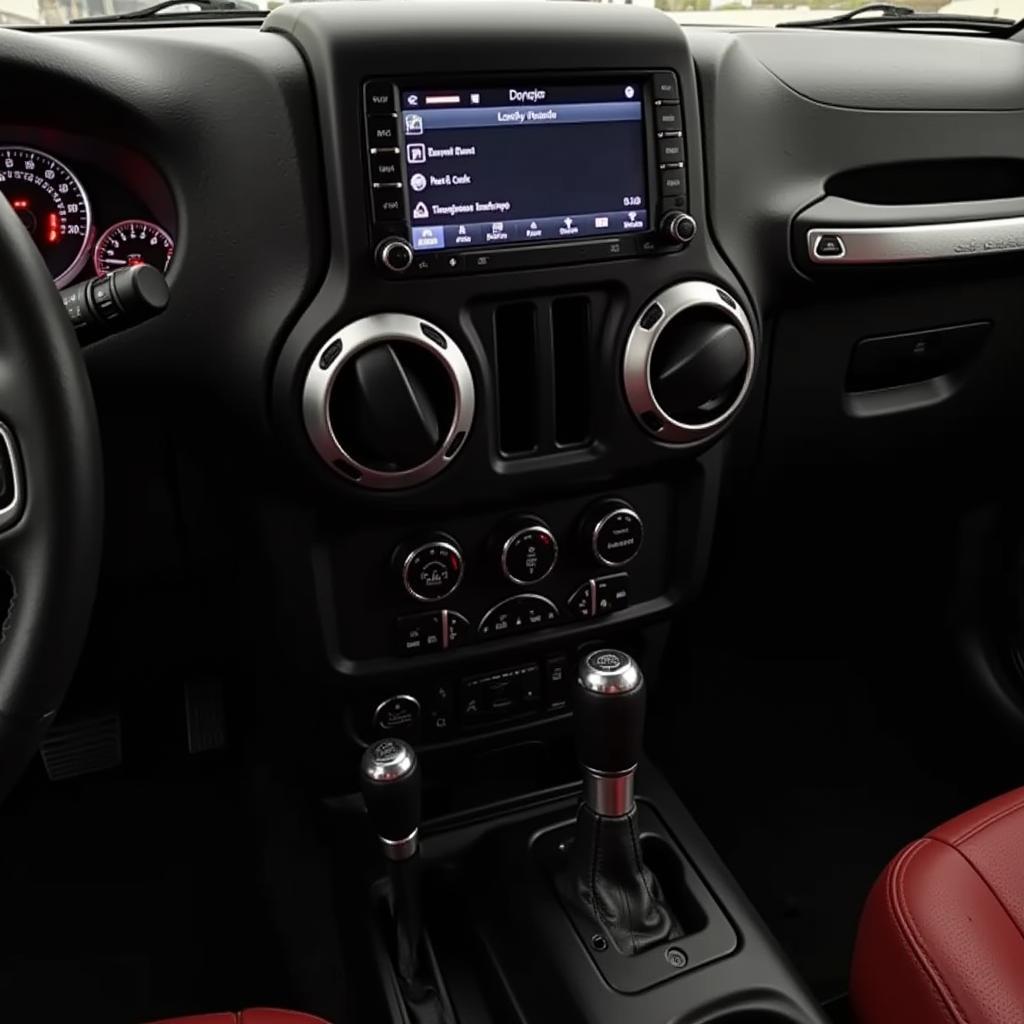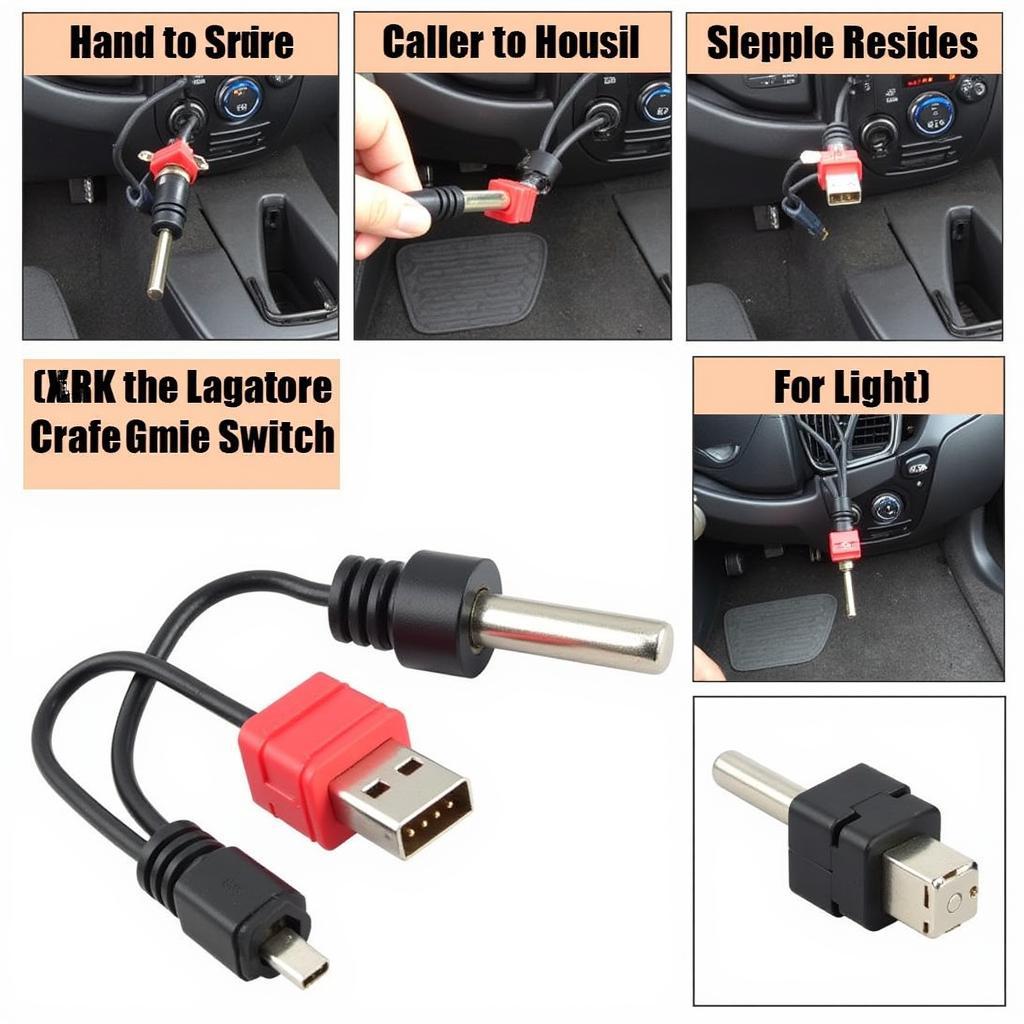Your car is completely dead, even with a new battery. This frustrating situation can leave you stranded and confused. Don’t panic! This article will guide you through the potential causes and solutions when your car has no power, even after replacing the battery.
Many drivers experience the dreaded scenario of turning the key and hearing nothing. A dead battery is often the first suspect, and replacing it seems like the logical solution. However, sometimes even a new battery doesn’t solve the problem. This article will delve into why your car might be completely dead despite a new battery and offer practical solutions.
Why is My Car Still Dead With a New Battery?
Several issues can cause a car to remain lifeless even with a new battery. These problems range from simple fixes to more complex electrical faults. Understanding these possibilities is the first step to getting your car back on the road.
Common Culprits for a Dead Car
- Faulty Alternator: The alternator recharges the battery while the engine is running. A malfunctioning alternator won’t charge the new battery, leading to a dead car.
- Bad Battery Cables and Terminals: Corroded or loose battery terminals and cables prevent proper current flow, effectively rendering the new battery useless. Even a brand new battery won’t work if the connection is bad.
- Parasitic Drain: Some electrical components continue to draw power even when the car is off. This “parasitic drain” can slowly deplete even a new battery, leaving you with a dead car in the morning.
- Blown Fuses: A blown fuse related to the ignition system or fuel pump can interrupt the power supply, preventing the car from starting. Check your owner’s manual for the fuse box location and the specific fuses related to starting.
- Ignition Switch Problems: A faulty ignition switch might not send the necessary signal to start the engine, even with a fully charged battery.
- Starter Motor Failure: The starter motor cranks the engine to initiate the combustion process. A failing starter motor will prevent the engine from starting, even with a new battery.
Less Common Causes
Beyond the usual suspects, less common issues can also contribute to a car being completely dead with a new battery. These include:
- ECU (Engine Control Unit) Malfunction: The ECU controls various engine functions. A faulty ECU can prevent the car from starting, even with a good battery and other working components.
- Wiring Issues: Damaged or corroded wiring anywhere in the starting circuit can disrupt the power flow, mimicking a dead battery.
- Anti-theft System Malfunction: The car’s anti-theft system can sometimes malfunction and prevent the engine from starting, even with a new battery.
Troubleshooting a Car That’s Dead With a New Battery
If you find yourself with a car that’s completely dead, even with a new battery, follow these steps:
- Check Battery Connections: Inspect the battery terminals and cables for corrosion or looseness. Clean the terminals and tighten the connections. Similar to the issues discussed in signs of a defective car battery, poor connections can render a new battery useless.
- Test the Alternator: Use a multimeter to check the alternator’s voltage output. A functioning alternator should produce around 14 volts while the engine is running. You can learn more about diagnosing battery issues at diagnosing a bad battery.
- Inspect Fuses: Check the fuses related to the ignition system, fuel pump, and starter motor. Replace any blown fuses.
- Check for Parasitic Drain: Use a multimeter to measure the current draw with the car off. A drain exceeding 50 milliamps might indicate a parasitic drain problem. Addressing this, like the solutions provided in keep car battery from draining, can prevent future battery issues.
- Test the Starter Motor: Listen for a clicking sound when you try to start the car. A clicking sound might indicate a faulty starter motor.
- Check the Ignition Switch: Try jiggling the key in the ignition switch while trying to start the car. If the car starts intermittently, the ignition switch might be faulty.
“A dead car with a new battery often points to a charging system failure,” says John Smith, ASE Certified Master Technician. “Checking the alternator is a crucial step in diagnosing the problem.”
When to Seek Professional Help
If you’ve tried the above steps and your car is still dead, it’s time to seek professional help. A qualified mechanic can diagnose and repair more complex electrical problems, such as a faulty ECU or wiring issues.
Jane Doe, Electrical Systems Specialist, adds, “While some issues can be resolved with DIY methods, complex electrical faults require specialized tools and expertise.” Just like understanding the symptoms car battery needs replacement, knowing when to seek professional help is important.
Conclusion
A car that’s completely dead, even with a new battery, can be frustrating. However, by understanding the potential causes and following the troubleshooting steps outlined in this article, you can often pinpoint the problem and get your car running again. Don’t hesitate to seek professional help if the problem persists. Knowing your options, like the information presented about the hyundai santa fe key fob, can empower you to make the best decisions for your car.


